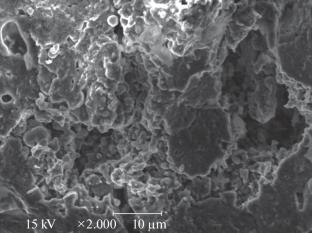回收页岩焦与液态玻璃以生产隔热材料
IF 0.4
Q4 ENGINEERING, CHEMICAL
引用次数: 0
摘要
在页岩焦和液态玻璃的基础上,可以生产出导热系数不超过 0.25 W/m °C 的多孔填料(隔热)。M350 填充剂是在液态玻璃中加入 70% 的页岩焦而制成的;这种成分是最佳的。研究表明,对于最佳成分的样品,外部的气孔比内部的气孔更少。观察结果表明,样品的内部结构主要由封闭孔隙组成,封闭孔隙比开放孔隙产生更强的成分。本文章由计算机程序翻译,如有差异,请以英文原文为准。


Recycling of Shale Coke with Liquid Glasses to Produce Heat Insulation
On the basis of shale coke and liquid glass, a porous filler (heat insulation) with thermal conductivity no more than 0.25 W/m °C may be produced. M350 filler is made by adding 70% shale coke to the liquid glass; that composition is optimal. Research shows that, for a sample of optimal composition, the porosity is less evident on the exterior than in the interior. Observations reveal that the internal structure of the sample consists mainly of closed pores, which result in stronger components than open pores.
求助全文
通过发布文献求助,成功后即可免费获取论文全文。
去求助
来源期刊

Coke and Chemistry
ENGINEERING, CHEMICAL-
CiteScore
0.70
自引率
50.00%
发文量
36
期刊介绍:
The journal publishes scientific developments and applications in the field of coal beneficiation and preparation for coking, coking processes, design of coking ovens and equipment, by-product recovery, automation of technological processes, ecology and economics. It also presents indispensable information on the scientific events devoted to thermal rectification, use of smokeless coal as an energy source, and manufacture of different liquid and solid chemical products.
 求助内容:
求助内容: 应助结果提醒方式:
应助结果提醒方式:


